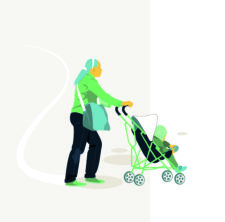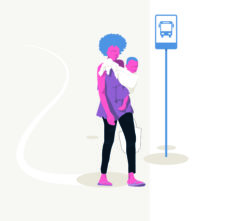Mobility and Access for Babies, Toddlers, and Their Caregivers Course
Welcome to the Mobility and Access for Babies, Toddlers, and Their Caregivers course.
This course will explore the who, why, what, and how of mobility and access for babies, toddlers, and caregivers. We will explore planning, design, and policies focused on this user group and explore why it is important to integrate their particular needs into transport planning decisions.
Who is this course for: This course is designed for professionals in the planning and transportation field or in early childhood development and health, aspiring planners, and decision-makers who want to learn more about how transportation and the built environment impact young children and caregivers and how to create better cities for them.
About this course: This self-paced virtual course has 3 modules that will take about 45 minutes each, for a total of 2.5 hours of material. We designed it so that you would spend less than one hour a week for three weeks to finish the course. You are also welcome to binge-watch. At the end of the course, you can request to receive a certificate of completion and be invited to future live workshops.
This course follows the synthesis of mobility needs and frameworks for access laid out in the report: Access for Babies, Toddlers, and Their Caregivers. We will look at concepts like the 15-minute neighborhoods and 10-minute public transport and explore how cycling, walking, and public transit can be instrumental to the mobility of babies, toddlers, and caregivers.
We will also dive into tools that can help you evaluate the quality of your city’s transport and land use, including measuring walkability and defining the principles and objectives of inclusive transit-oriented development, which encapsulates the main characteristics of urban access.



